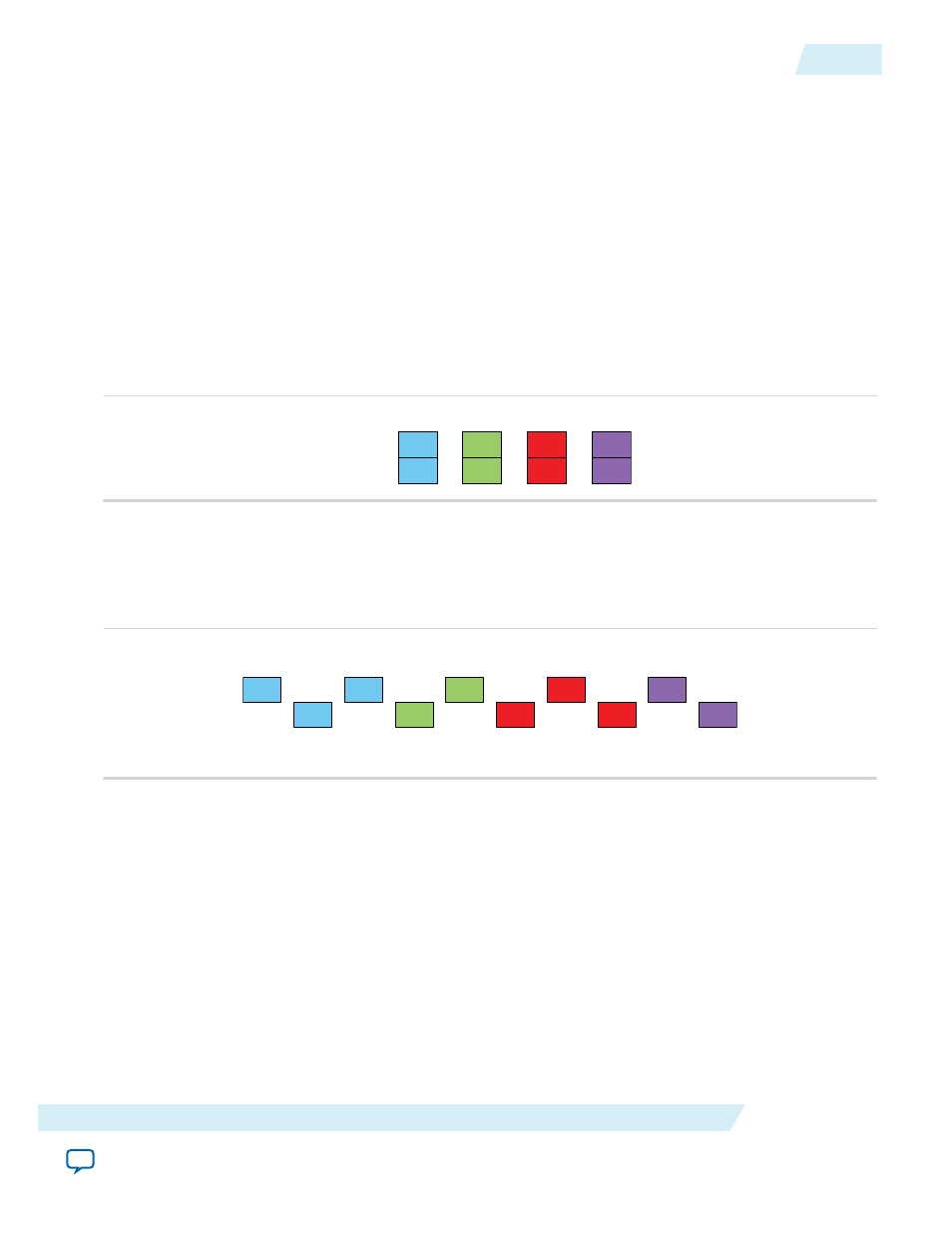Altera Video and Image Processing Suite User Manual
Page 304

With the moving Dial test sequence, the motion adaptive HQ mode improves the Bob interpolation
further by operating on a 17×3 kernel of pixels. This allows much lower angles to be detected and interpo‐
lated, thus eliminating the staircasing effect almost completely. The area is 8,252 LUTs.
Cadence Detection and Reverse Pulldown in the Deinterlacer II IP Core
You can configure the Deinterlacer II IP core to implement a 3:2 or 2:2 cadence detect mode during
compile time.
When images from film are transferred to NTSC or PAL for broadcast (which requires frame-rate
conversion), a cadence is introduced into the interlaced video.
Figure B-4: Odd and Even Fields
The figure below shows an example of four frames from a film; each frame is split into odd and even
fields.
1
1
2
2
3
3
4
4
Original film
Odd lines
Even lines
For broadcast, a telecine is applied to minimize artifacts due to the rate conversion, which introduces a 3:2
cadence to the field.
Figure B-5: Incoming Interlaced Video
The figure below shows an example of the interlaced video.
Incoming interlaced video with 3:2 telecine
1
1
1
2
2
3
3
3
4
4
3
2
3
2
You may correctly handle such video sequence by detecting the cadence and reconstructing (reverse
pulldown) the original film. You can achieve this by comparing each field with the preceding field of the
same type (3:2 detection) or detecting possible comb artifacts that occurs if weaving two consecutive fields
(2:2 detection)
UG-VIPSUITE
2015.05.04
Cadence Detection and Reverse Pulldown in the Deinterlacer II IP Core
B-3
Choosing the Correct Deinterlacer
Altera Corporation
